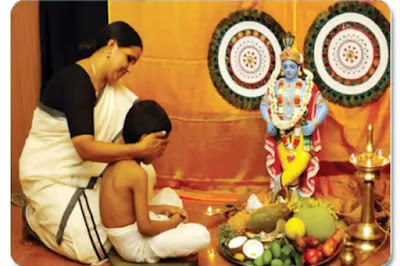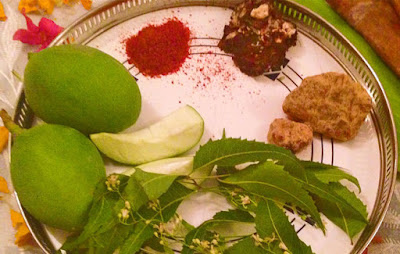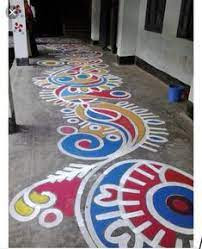It was the year 1987. A year made memorable in India’s cricketing history by virtue of being Sachin Tendulkar’s debut year in international cricket. India was touring Pakistan and Sachin had been out for a duck and a 7 in the first match, scored 12 in the second, dropped for the third and the fourth was being played in Sialkot. The first three matches had been drawn and for this one, in Sialkot, an obnoxiously green, grassy pitch had been specially prepared by the Pakistani captain Imran Khan. His express orders to the groundsmen had been, “If you cut the grass, I’ll have your heads cut off.” The pitch was covered with inch-long blades of thick green grass and the four world-class fast bowlers in the Pakistani team; Wasim Akram, Waqar Younus, Aquib Javed and Imran Khan himself, were making their presence felt.
 |
| With Kapil Dev (left) and Captain Mohammed Azharuddin (right) on his debut in 1987 |
It was
the fifth day of the match. India was tottering at 22 for 4. Sidhu and Ravi
Shastri were at the crease. The bowling
was murderous; the newly-married Sidhu had been hit several times on the body
and was just desperately praying to God to be given out. He remembers thinking if he would ever see his
bride again. The balls would just come flying at 170 kmph; deviating and
swinging in the air in lethal, unexpected ways. Most times, the batsman hardly
saw them coming. One such vicious, whistling bouncer hit Shastri on the gloves
and India were 22 for 5.
 |
| Coming out to bat at no: 6 on that fateful day at Sialkot |
Sidhu looked
towards the dressing room, dreading to see who the India captain would send out.
The moment remains etched forever in his memory. Out walked Sachin Tendulkar, at
15 years 3 months old, 5 ft nothing, with a mop of curly hair. He recalls thinking they had thrown the
chicken out at the hungry jackals. Mentally preparing himself to be batting
with the bowlers next, he walked up to him, “Shabash, shabash
Tendlya, sambhal ke (Well-done, Tendlya, look sharp). The very first
ball Tendulkar faced was a lethal, sizzling delivery from Waqar that would have
cut Tendulkar in half had he not stepped out of the way. The next ball was a
bouncer that Sachin tried to hook. The ball took an inside edge and smashed his
nose at 170 kmph. He collapsed like a sack of flour collapsing to the floor,
when a biggish hole has been cut into the bottom.
 |
| The way to cricketing history is paved with a broken nose! |
“I ran
towards him pell-mell,” Sidhu recalls. My first thought was, “Oh my God the kid
is dead… blood was gushing from where his nose had been. The front of his shirt was soaked red by the
time I got to him. He was writhing in pain on the crease, his eyes already
outlined in deep black circles, within a few seconds of being hit. I scarcely
knew what I was doing. I tore off my gloves and went down on my knees beside
him, propping him up at the neck with one arm and wildly signalling the
dressing room with the other. There was blood on the grass everywhere.”
First-aid walked up in the form of Dr Ali Irani, the Indian team’s physio. Everyone knew what would follow, a
slab of ice on the head and a Saridon popped into the mouth; his remedies were
often worse than the injuries he was called upon to treat.
 |
| Bringing out the best in each other: Sidhu and Tendulkar |
“There is no place like the non-striker’s end to make you appreciate your fellow player.”
Sidhu
walked back despondently to his end of the crease, looking at the scorers
walking towards the board, all set to change ‘for 5’ to ‘for 6,’ when all of a
sudden he heard a squeaky voice. “I can still hear it clearly,” he recalls, “and
23 years on, I get the same goosebumps that I got back then.” I turned back, and I saw this young boy with
three failed innings behind him, who had nothing to lose in the current
situation, trying to push the plump Ali aside, ridiculous bloodied blobs of
cotton hanging out from the still-streaming nostrils, “Mein khelega (I will play)” he
said.
Here was
I, 24 years old, with three centuries to my name, and all I could think of was
my wife. Here was this boy, barely out of school, with nothing but a string of dismissals
behind him and all but dead, insisting on playing for his country.
It was
unbelievable. I went back and stood next to him. “Tendlya, I can’t tell you how
proud I am of you,” I said. “Ae Sherry, you don’t have to be proud,” the
squeaky voice now made gluggy by all the blood he was swallowing. “We cannot
lose this test match re, hamaare desh ki saakh daao par lagi hai” were
his exact words. He walked back to the striking end.
Both of us
went back to the business at hand, struggling to gain control of our emotions.
I anticipated a yorker next and he, even with his eyes shut with the pain and sunken
beyond belief, blood spattered all over the top-half of his trousers now, face
swollen, nostrils bleeding non-stop, even in that state he anticipated a yorker
too. The yorker came at 160 kmph and
found Tendulkar standing a feet and a half behind the crease, with his brain
ticking, absolutely prepared. He just parted his feet and let it go, with Waqar glaring at him. He walked up to Waqar and looked him in the
eye -- “Ae ungli katwa (Waqar has a cut finger on one hand) tuzha makhan
re, makhan (Hey you with the cut finger, you’re as soft as butter/I’ll slice
through you like butter!). He walked back calmly and hit Waqar for two
boundaries in that over.
 |
| Sachin and Younus snapped on debut: Tuzha makhan re makhan! |
We closed
the day with the scoreboard reading India 186 for 5 plus extras. Navjot Singh
Sidhu N.O. 97 and Sachin Ramesh Tendulkar N.O. 67. No more Indian wickets fell that day. We
eventually drew that test match with the hosts Pakistan.
It was
baptism by fire (by blood?). That’s the hallmark of a great champion that sets
him apart from common men. He has the courage to conquer his fears, turn
weakness into strength, obstacles on his path into stepping stones -- turn defeat
to victory. It’s all in his mind, in his will. It’s in the way he thinks.
 |
| With the cricketing legend Sir Donald Bradman: "I see myself, when I see Sachin batting." |
On his 48th birthday, leftrightthodasacenter.blogspot.com salutes Bharat Ratna Sachin Ramesh Tendulkar, student of Ramakant Achrekar. Thanks for making us feel “Saare jahaan se accha, Hindostan hamara” whenever we look at you. As a nation, we shall forever be in your debt. You showed us what it is to be dedicated to your passion, beyond religion, beyond politics.
 |
| Coach Ramakant Achrekar: The Man who gave us Sachin Tendulkar |
So what do you think? Please leave your comments and best wishes in the section below and don’t forget to read, share, follow and subscribe to leftright 'thoda sa' center!
Image credits: YouTube, Pinterest and Google





































